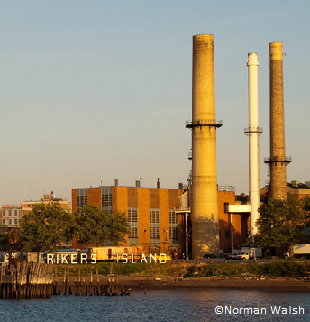 Today the Sabin Center is publishing Heat in US Prisons and Jails: Corrections and the Challenge of Climate Change. This groundbreaking paper, written by visiting scholar Daniel Holt, addresses two important but largely neglected questions: How will increased temperatures and heat waves caused by climate change affect prisons, jails, and their staff and inmate populations? And what can correctional departments do to prepare for greater heat and minimize the dangers it poses?
Today the Sabin Center is publishing Heat in US Prisons and Jails: Corrections and the Challenge of Climate Change. This groundbreaking paper, written by visiting scholar Daniel Holt, addresses two important but largely neglected questions: How will increased temperatures and heat waves caused by climate change affect prisons, jails, and their staff and inmate populations? And what can correctional departments do to prepare for greater heat and minimize the dangers it poses?
Some 2.2 million inmates are currently incarcerated in around 1,800 prisons and jails across the United States. Nearly half a million correctional employees work in these facilities. Indoor environmental conditions in prisons and jails therefore have a direct impact on the health of well over 2.5 million people.
Extreme heat is the most common cause of weather-related death in the US. Over the next several decades, heat will become an even graver threat, as climate change brings rising temperatures and increasingly harsh extreme-heat events. These changes will jeopardize the health of inmates and correctional officers alike, and will stress the physical plant of the correctional sector.
Many correctional departments are already unable to maintain healthy indoor temperatures during the summer months. Summertime heat already harms both inmates and correctional officers. Heat-related illness has claimed the lives of numerous inmates in recent years.
Correctional departments will soon have to confront the urgent challenge of adapting their systems and facilities to greater heat and other impacts of climate change. The success or failure of their adaptation efforts will be measured in human lives as well as public dollars.
Until now, the implications of climate change for corrections have been largely disregarded by both correctional administrators and public officials working on climate adaptation policy. Heat in US Prisons and Jails begins the process of connecting the discussions of climate policy and correctional policy. It provides the first systematic analysis of the correctional sector’s structural and legal vulnerabilities to high temperatures caused by climate change. It also offers recommendations for adaptation to address unique challenges that climate change poses for corrections.
Adapting corrections to heat and other impacts of climate change is not a task for correctional departments alone. Just as correctional administrators should begin educating themselves about climate change and how it will affect their departments, so should policymakers, academics, and others who are already working on adaptation widen their compass to include corrections. Heat in US Prisons and Jails aims to help both efforts.



